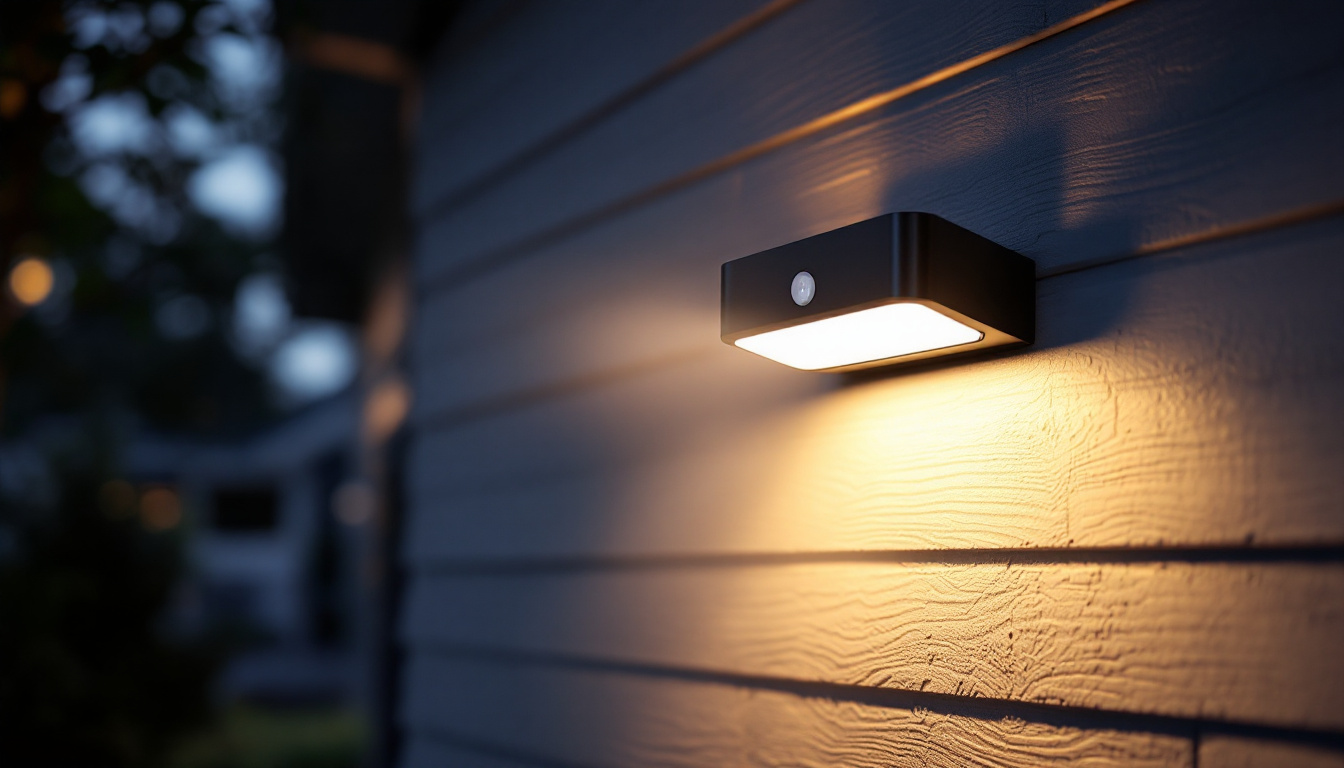
Dimmer switches are essential components in modern lighting design, offering both functionality and ambiance. They allow users to adjust the brightness of lights, creating the desired atmosphere for various settings. However, their installation and selection can be fraught with challenges, especially for lighting contractors who may not be familiar with the nuances of these devices.
Incorporating dimmer switches into a lighting project can enhance energy efficiency and prolong the lifespan of light bulbs. Nevertheless, making the wrong choices can lead to costly mistakes, both in terms of finances and client satisfaction. This article aims to provide valuable insights into how to avoid common pitfalls associated with dimmer switches in lighting projects.
One of the primary considerations when selecting a dimmer switch is compatibility with the type of lighting being used. Traditional incandescent bulbs are generally straightforward, but with the rise of LED and CFL technology, the landscape has become more complex. Not all dimmers work seamlessly with these energy-efficient options, which can result in flickering lights or even complete failure to dim. Therefore, it is crucial for contractors to verify that the dimmer is rated for the specific type of bulb being installed. This not only ensures optimal performance but also enhances the overall user experience, as clients will appreciate the smooth and reliable functionality of their lighting systems.
Moreover, the placement and design of dimmer switches can significantly impact the usability and aesthetics of a space. For instance, in a dining area, having a dimmer switch easily accessible can allow for a quick transition from bright task lighting to a softer, more intimate glow during meals. Additionally, the style of the dimmer switch itself can complement the overall decor of a room. With a variety of designs available, from sleek modern styles to more traditional looks, contractors should consider both functionality and visual appeal when recommending options to clients. This attention to detail not only elevates the project but also demonstrates a commitment to quality and customer satisfaction.
There are various types of dimmer switches available on the market, each designed for specific applications. Understanding these types is crucial for making informed decisions. The most common types include standard rotary dimmers, slide dimmers, and smart dimmers. Each type has its own set of features and compatibility requirements.
Standard rotary dimmers are often the most straightforward, featuring a knob that adjusts brightness. Slide dimmers, on the other hand, provide a more tactile experience, allowing users to slide a lever up or down to control light levels. Smart dimmers integrate with home automation systems, enabling remote control via smartphones or voice commands, which can be a significant selling point for tech-savvy clients. In addition to these, there are also three-way dimmers that allow for control from multiple locations, making them ideal for larger rooms or hallways. This versatility can enhance the functionality of a space, providing convenience and ease of use.
One of the most critical aspects of selecting a dimmer switch is ensuring compatibility with the light bulbs being used. Not all dimmers work with all types of bulbs, and this can lead to flickering, buzzing, or even complete failure of the lighting system. For instance, traditional dimmers are typically designed for incandescent and halogen bulbs, while newer LED and CFL bulbs require specific dimmers to function correctly.
Contractors should always check the specifications of both the dimmer and the light bulbs to avoid compatibility issues. This not only ensures a smooth installation process but also enhances the overall performance of the lighting system, leading to satisfied clients. Additionally, it’s worth noting that some dimmers come with adjustable settings that can accommodate a range of bulb types, offering greater flexibility for homeowners who may want to switch out their lighting in the future. Understanding the wattage limits and load requirements of both the dimmer and the bulbs is also essential, as exceeding these limits can result in damage or safety hazards. By taking these factors into account, contractors can provide tailored solutions that meet their clients’ specific lighting needs and preferences.
Proper wiring is essential for the successful installation of dimmer switches. Many contractors overlook the importance of following the manufacturer’s wiring instructions, which can lead to malfunctions or safety hazards. It’s vital to ensure that the electrical capacity of the circuit matches the requirements of the dimmer switch and the connected lights.
Before installation, contractors should also assess the existing wiring in the space. Older homes may have outdated wiring that could pose challenges when integrating modern dimmers. In such cases, it may be necessary to upgrade the wiring to meet current safety standards and ensure optimal performance. This might involve replacing old knob-and-tube wiring or aluminum wiring with copper, which is more reliable and efficient. Additionally, contractors should be aware of local building codes and regulations, as these can dictate specific requirements for wiring and installation practices, ensuring compliance and safety.
Once the dimmer switch is installed, thorough testing is crucial. This step is often rushed, but it can save time and money in the long run. Testing should include checking for flickering, ensuring smooth dimming capabilities, and verifying that the dimmer does not overheat. A simple test can prevent callbacks and enhance client satisfaction. Furthermore, it’s advisable to test the dimmer with various types of bulbs, such as LED, incandescent, or CFL, as compatibility can vary significantly between different bulb types. This ensures that clients receive a fully functional and optimized lighting experience tailored to their specific needs.
Additionally, contractors should educate clients on how to use the dimmer switch effectively. Providing guidance on the proper operation can help prevent misuse and ensure that clients enjoy the full benefits of their new lighting system. It can also be beneficial to explain the advantages of dimming, such as energy savings and mood enhancement, which can encourage clients to utilize their dimmers more frequently. Offering tips on how to pair dimmers with smart home systems can further enhance the user experience, allowing clients to control their lighting remotely or program it to suit their lifestyle.
One of the most frequent mistakes made during dimmer switch installations is overloading circuits. Each dimmer switch has a maximum wattage rating, and exceeding this limit can lead to overheating, tripped breakers, or even electrical fires. Contractors must calculate the total wattage of all connected lights and ensure that it does not exceed the dimmer’s capacity.
In cases where a project requires a higher wattage, it may be necessary to install multiple dimmer switches or consider alternative lighting solutions. Taking the time to assess the load can prevent significant issues down the line and safeguard both the contractor’s reputation and the client’s home.
Every region has specific electrical codes and regulations that must be adhered to during installation. Neglecting these can result in fines, project delays, or even safety hazards. Contractors should familiarize themselves with local codes regarding dimmer switch installations, including requirements for wiring, load capacities, and safety features.
Staying compliant not only protects the contractor but also ensures that the client receives a safe and reliable lighting system. Regularly updating knowledge on local regulations can be a valuable practice for contractors in the lighting industry.
Effective communication with clients is essential throughout the lighting project. Setting clear expectations regarding the capabilities of dimmer switches can help avoid misunderstandings. Clients should be informed about the types of dimmers available, their features, and any limitations that may exist.
Providing clients with a detailed explanation of how dimmers work and how to use them can enhance their overall experience. This proactive approach not only builds trust but also empowers clients to make informed decisions about their lighting choices.
Offering post-installation support can significantly enhance client satisfaction. After the installation, contractors should be available to address any questions or concerns that may arise. This support can include troubleshooting issues, providing maintenance tips, and offering advice on how to maximize the benefits of the dimmer switches.
By being responsive and supportive, contractors can foster long-term relationships with clients, leading to repeat business and referrals. Satisfied clients are more likely to recommend the contractor to others, which can be invaluable for business growth.
The rise of smart home technology is transforming the landscape of lighting control. Smart dimmers are becoming increasingly popular, allowing users to control their lights remotely via smartphones or voice-activated devices. This trend presents an opportunity for contractors to offer advanced solutions that cater to tech-savvy clients.
Integrating smart dimmers into lighting projects not only enhances convenience but also allows for more sophisticated lighting designs. Contractors should stay informed about the latest advancements in smart dimming technology to offer clients cutting-edge solutions that meet their evolving needs.
As the focus on sustainability continues to grow, energy-efficient lighting solutions are becoming a priority for many clients. Dimmer switches play a crucial role in reducing energy consumption by allowing users to adjust light levels based on their needs. Contractors should emphasize the energy-saving benefits of dimmer switches when discussing options with clients.
Incorporating energy-efficient dimmers into lighting projects not only aligns with sustainability goals but also appeals to environmentally conscious clients. This approach can enhance the contractor’s reputation as a forward-thinking professional in the lighting industry.
Dimmer switches are a valuable addition to any lighting project, providing flexibility, energy efficiency, and enhanced ambiance. However, avoiding costly mistakes requires careful consideration during the selection, installation, and communication processes. By understanding the various types of dimmers, ensuring compatibility with light bulbs, and adhering to best practices, lighting contractors can deliver exceptional results.
Moreover, staying informed about future trends and offering post-installation support can further enhance client satisfaction and foster lasting relationships. In an ever-evolving industry, the ability to adapt and provide innovative solutions will set successful contractors apart from the competition.
Ready to elevate your lighting projects with the right dimmer switches? Look no further than LumenWholesale for a vast selection of top-quality, spec-grade lighting products at unbeatable wholesale prices. Our inventory is designed to meet the highest industry standards, ensuring you provide your clients with reliable and high-performance lighting solutions. Plus, with free shipping on bulk orders, you can stock up on the best lighting products without worrying about hidden fees or inflated markups. Make your next lighting project a shining success and experience the perfect blend of quality, affordability, and convenience. Visit LumenWholesale today for Wholesale Lighting at the Best Value.

Discover how lighting contractors are transforming spaces with bath vanity lights through real-world success stories.

Discover how to enhance your outdoor spaces with wall-mounted solar lights that offer sustainable and reliable illumination.

Discover why LED surface mount ceiling lights are becoming a must-have for lighting contractors.

Discover how motion sensor exterior lights can revolutionize your lighting installation projects.